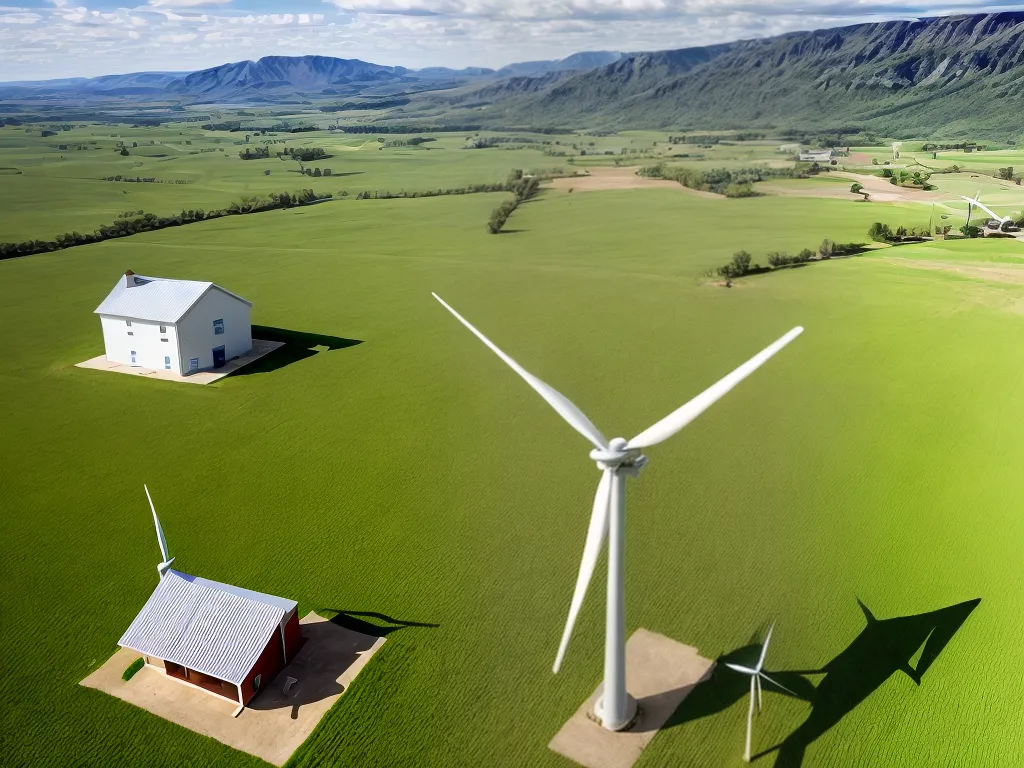
How to Reduce Your Carbon Footprint with Small-Scale Wind Power
What is a carbon footprint?
My carbon footprint is the amount of greenhouse gases I produce through my daily activities. The biggest contributors to my personal carbon footprint are typically things like:
- Transportation (driving, flying)
- Home energy use
- Diet and food choices
- Waste generation
By understanding my carbon footprint and making small changes, I can significantly reduce my environmental impact. Even small-scale renewable energy projects like installing a residential wind turbine can make a difference.
Benefits of small-scale wind power
Installing a small wind turbine on my property has several benefits:
- It generates clean, renewable electricity. This replaces some of the fossil fuel-based electricity I would otherwise buy from my utility company.
- It reduces my reliance on the grid. Wind power can supplement grid power or work completely off-grid.
- It offsets my carbon footprint. Each kilowatt-hour of wind energy I generate prevents emissions from fossil fuels.
- It saves money on electricity bills over time. After recovering turbine costs, the "fuel" is free.
- It demonstrates my commitment to sustainability. A wind turbine is a visible investment in our planet's future.
For someone concerned about their carbon footprint, residential wind power is an impactful step I can take. The turbines may be small, but the benefits are measurable.
Evaluating wind resources on my property
Before installing a wind turbine, it's critical to evaluate the wind resources on my property. Ideal wind conditions include:
- Average annual wind speeds over 9 mph at the proposed turbine height.
- Consistent breeze throughout the year, not just occasional windy days.
- Turbulence-free windflow, with few obstructions like trees or buildings.
There are a few ways I can assess my wind patterns:
- Review wind maps to see estimated speeds in my area.
- Track onsite wind yourself using an anemometer for a period of months.
- Hire a certified expert to conduct an official wind site assessment.
This upfront research is crucial to ensure my turbine model and placement is optimal.
Choosing the right turbine size
Once I've confirmed there are sufficient wind resources, it's time to choose the right turbine. Key factors to consider:
- Rated power output - 2-10 kW turbines are common for homes. Match this to my electricity usage.
- Rotor diameter - 5-10 feet is typical. Bigger rotors harvest more wind energy.
- Tower height - 20-140 feet elevates it above obstructions. Higher is better.
- Noise level - Under 55 decibels is ideal for residential settings.
- Inverter - Required to convert turbine output into usable AC power.
Work with a qualified wind expert to select the correctly sized wind turbine, tower, inverter, and accessories for my location.
Installation and maintenance
Proper installation is critical for safety, performance, and longevity. Tasks include:
- Pouring a concrete pad to anchor the tower base.
- Lifting towers and turbine components into place with cranes.
- Attaching the turbine and blades to the pre-assembled tower.
- Running electrical cables from the turbine to inverters and batteries.
Once running, wind turbines require periodic maintenance, such as:
- Inspecting blades, bolts, and moving components for wear.
- Checking electrical connections and lightning protection.
- Replacing worn bearings and brake pads.
- Cleaning debris or ice buildup on blades.
With routine upkeep, residential wind turbines can provide 20+ years of reliable service.
Connecting to the grid vs off-grid use
I have two options for utilizing the power generated by my wind turbine:
-
Grid-tied - Feeding excess power back to the grid offsets my usage. Requires synchronizing with the utility grid.
-
Off-grid - Storing power in batteries for off-grid use. Allows independence from the utility company. Requires an off-grid inverter and substantial battery bank.
Which is best depends on my goals, utility policy, and local codes. Going fully off-grid requires meticulous planning but provides maximum energy resilience and carbon footprint reduction.
A grid-tied system with a small battery bank can be a good compromise. I can reduce my grid reliance while keeping the option to feed excess power back to the grid.
Financial incentives and permitting
Installing a residential wind turbine represents a major investment. However, there are financial incentives that can improve the return on investment:
- Federal tax credits - Currently a 26% tax credit is available for installed costs.
- State/local rebates - Some utilities offer $500 to $5000 rebates per turbine.
- Net metering - Utility payments for contributing excess power to their grid.
Permitting requirements also vary significantly by locality. Be sure to research local zoning regulations, permit costs, grid interconnection policies, and any noise or height restrictions that apply in my area.
With proper siting, system sizing, installation, and financial incentives, a residential wind turbine can be a smart investment in my green energy future. Although small in scale, it can make a measurable impact on my carbon footprint when combined with other sustainability actions.